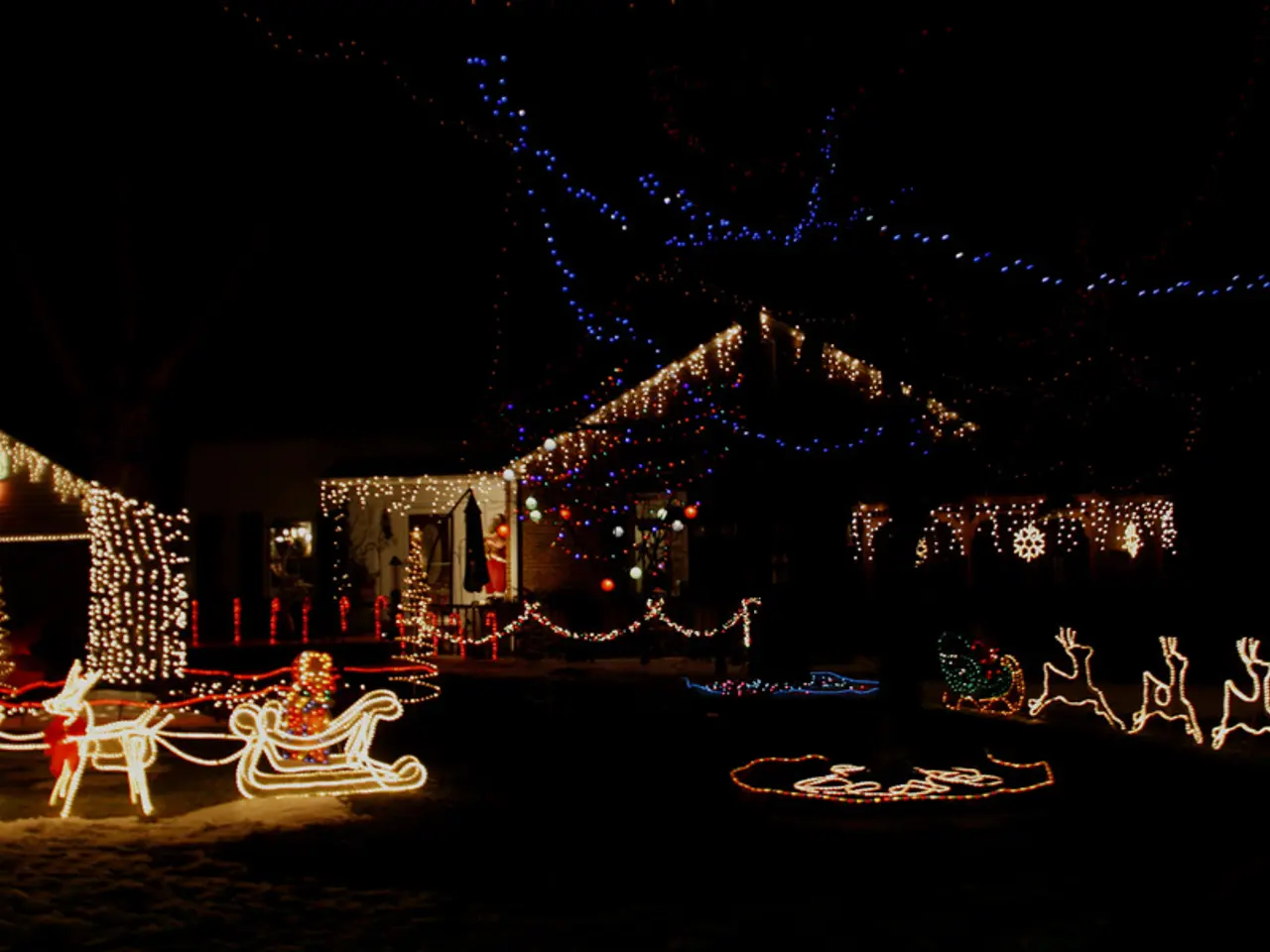Kitchen, Bathroom, and Living Room Illumination: Perfecting the Right LED Lighting
In the quest for a well-lit and comfortable home, understanding the importance of color temperature and brightness in light bulbs can significantly enhance the atmosphere and functionality of each room. Here's a room-by-room guide to help you select the ideal light bulbs for your living space.
Starting in the heart of the home, the **Living Room** is designed for relaxation and socializing. Warm white light bulbs, labelled as Warm White or WW, with a color temperature ranging from 2700K to 3000K, create a cozy and inviting ambiance. Aim for around 450–800 lumens per bulb, with a total of approximately 1000 lumens per 100 square feet, to strike the perfect balance between brightness and warmth.
Moving to the **Bedroom**, warm white light continues to dominate, with a color temperature of 2700K, to encourage restfulness and comfort. The brightness should be similar to the living room, ensuring a peaceful and relaxing environment.
In task-oriented areas like the **Kitchen**, **Bathroom**, and **Laundry room**, cool white light bulbs with a color temperature between 4000K and 5000K are ideal. This cooler, brighter light improves clarity for detailed tasks such as cooking, cleaning, and personal grooming. Aim for 2000+ lumens per 100 square feet to ensure optimal visibility.
The **Home Office** or **Study** benefits from neutral white light bulbs, with a color temperature of 3500K to 4000K. This balanced light supports focus without causing harshness, making it perfect for workspaces. Once again, aim for 2000+ lumens per 100 square feet.
For **Reading Areas**, a combination of warm and neutral white light bulbs works best. Warm white bulbs provide comfort, while neutral white bulbs offer better visibility without straining the eyes. Aim for 450–800 lumens per bulb to create the perfect reading environment.
When it comes to **Makeup Application**, cooler white light around 4000K to 5000K is ideal because it closely resembles natural daylight, ensuring accurate color representation for makeup. Avoid overly warm or dim lighting that distorts colors.
In addition to color temperature and brightness, consider the shape and fixture compatibility of bulbs, as well as the option for dim-to-warm LED bulbs that adjust color temperature with dimming for rooms like living areas and bedrooms, providing flexibility from bright task lighting to relaxing ambient light.
Hallways, without windows, benefit from the brightness provided by LED bulbs, improving safety in dark areas. Dimmable light bulbs can create a cosy atmosphere in the bedroom and living room, while LED bulbs have longer lifetimes, often exceeding 20,000 hours.
In recent years, energy-saving light bulbs, including halogen bulbs and LEDs, have been the standard choice. Halogen bulbs are ideal for the dining room due to their even color balance, while LED bulbs are effective in dark hallways, shining at full capacity upon turning on. Moreover, Japanese scientists have recently received the Nobel Prize in Physics for their breakthrough in the production of blue-light LEDs.
By following this room-by-room guide, you can ensure each room in your home has lighting optimized for its purpose, enhancing comfort, functionality, and atmosphere throughout your living space.
In the realm of interior design and lifestyle, the Living Room, with its primary function of relaxation and socializing, requires warm white light bulbs with a color temperature ranging from 2700K to 3000K, providing a cozy and inviting ambiance.
Transitioning to the Bedroom, warm white light continues to dominate with a color temperature of 2700K, fostering a restful and comfortable environment. In contrast, task-oriented areas such as the Kitchen, Bathroom, and Laundry room necessitate cool white light bulbs with a color temperature between 4000K and 5000K, enhancing clarity for detailed tasks.




